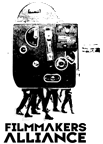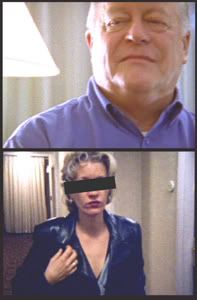Friday, February 25, 2011
The New Model Of Indie Film Finance, v2011.1 Investors
Peter Brodericks Distribution Bulletins
Monday, February 21, 2011
Who The F*%# Am I To Judge What's A Good Film?!!
Who the f*%# am I to judge what's a good film?! Nobody special. Just an asshole with an opinion who cares enough to try to understand the difference between a great film and the rest. If you are making and/or watching films, I hope you are one of those assholes, too.
Saturday, February 19, 2011
The New Model Of Indie Film Finance, v2011.1 Domestic Value & Funding
Wednesday, February 16, 2011
The New Model Of Indie Film Finance, v2011.1, Foreign Value
Part 2 repost of Ted Hope's blog on Indie Film Finance
The New Model Of Indie Film Finance, v2011.1, Foreign Value
By Ted Hope
Today continues my efforts to try to define the takeaway from the two most recent and robust US acquisition markets of Sundance & Toronto. I (and hopefully we) will try to extrapolate from them where we are today. How can we use our most recent experiences to determine the reality of our filmed dreams today? How can we move to a more realistic model of indie film finance?
Foreign estimates still set the initial value for films, and it is CAST that is the predominate determinator for this value. Before a film is shot, there are three types of actors that mean something to foreign buyers:
- 1) stars that have been in big hits in the relevant territories;
- 2) stars that have been in popular television shows in those territories;
- 3) stars that can be expected to generate a great deal of publicity everywhere.
Other than stars, there are a few other aspects of a film that create foreign value. Stars are another entity altogether from cast or actors — and it is really the stars that determine foreign value.
Are there any other factors that help shape what your project is determined to be worth overseas? Fortunately, yes! The track record of the collaborators have impact on a distributor’s willingness to consider a project. Experienced directors and producers have more foreign value, provided they have made films that have fairly recently been well received, either commercially or critically. Similarly, proven cinematographers, designers, editors, composers, and vfx supervisors can mean something.
When the foreign markets were more hungry for US product, it was partially due to their paid and free television’s appetite for it. Although that has been vastly diminished, if your film will fit well into foreign television programming, you have some security. It is generally thought that comedies and “urban” (i.e. non-white) content doesn’t travel. Nonetheless I have had buyers get excited about an office place comedy precisely because they feel like television but aren’t. Similarly, as new niche channels develop, new audiences aggregate. I still remain confident that as much as hip-hop transcended music to become a global lifestyle, “urban” programming can get some international legs once it gets its foot in the door.
Every international territory struggles with the same challenges of expensive marketing. When a project comes even with the hopes of decreasing some of those costs, buyers perk up. I have seen those results come both from aggregated audience action (i.e. twitter followers, facebook friends, and data lists) and transmedia builds. Although there is not yet the model that can be used to demonstrate success, let alone predict it, these first efforts still increase the appetite for acquisition among buyers, and thus potentially also the value.
For there to be foreign value, you need to have the potential to sell. The things that increase that potential also increase a film’s foreign value. At acquisition markets you see this phenomenon in full play as film’s that appear to be headed to a subsequent (and more major) festival, get snapped up far more readily.
Tomorrow we will look at why a film might hope to get acquired in the USA and where else can funding come from in the states.
Tuesday, February 15, 2011
The New Model Of Indie Film Finance, v2011.1
Monday, February 14, 2011
Netflix Distribution For Indies
The following is a re-post of an article in "The Independent".
SECURING DISTRIBUTION WITH NETFLIX
By Michelle L. Martin and Katie O'Connell
Many filmmakers want to reach Netflix's 16 million subscribers, but submission guidelines and criteria for films without third-party distributors aren't quite clear yet.
If you want tons of exposure for your film, Netflix—the world’s leading internet subscription service for movies and television—is the place to be. Netflix reaches over 16 million members in the United States and Canada. About a year ago they added 300 on-demand streaming indie films to their service. Getting your film distributed by Netflix, however, can be difficult. Even with a well-thought-out marketing plan and as much dedication and passion as you put into the making of your film, Netflix might not pick it up, and the company has yet to announce more specific requirements for independent film submissions.
Steve Swasey, vice president of Netflix corporate communications, says that for independents to get picked up by his company for distribution, they need a mixture of some or all of the following: queue demand, critical appeal, sizeable audience appeal, buzz, and film festival premieres. He says these are in no specific order and declines to give a specific number of requests needed for the Netflix queue. “If your film was profitable and gained plenty of exposure, the film's audience should be there to help support your film on Netflix,” Swasey says. “If your film got folks in their seats at film festivals and you spent time on marketing and building and audience then your chances are slightly higher.”
Swasey agrees that presenting a film to Netflix is akin to presenting a business plan to investors—you need to do your homework and deliver a great package in order to get considered for a Netflix run. You can always consult the company’s guidelines for more information on submissions.
According to the guidelines, they prefer to purchase films from a third-party distributor. If you find a distributor that already has a good relationship with Netflix, that will likely improve your chances. If you aren’t able to find a distributor, or prefer to DIY, they do accept submissions directly from filmmakers, but you must meet their criteria, and take Swasey’s suggestions into mind, before you send it in.
Whether you’re considering submitting to Netflix through a distributor or submitting yourself, marketing and buzz are as important as a script and camera equipment. Anthony Mora, of Anthony Mora Communications Inc., says if you’re hoping to eventually get distribution for a film, producers must develop a public relations strategy before the first day of shooting. “Too many [people] produce a film with no plan in place to market it. If they can afford a publicist, it is money well spent,” says Mora.
Mora recommends creating a basic press kit, both online and in paper form, and launching an online and traditional public relations campaign. Make sure to factor these costs into your overall budget. In other words, you can have the Picasso of films in the can ready to go, but according to Mora, if you can’t spread the word and create buzz, no one will know about it.
As Netflix offers no precise numbers in terms of audience size or queue requests needed for a green light, there is still uncertainty as to what will definitely get you noticed by Netflix. In some situations, they may pursue your film themselves. Randy Mack, producer of Burning Annie, says that his film, released in 2003, got noticed by Netflix while they were still in their festival run. Netflix went so far as to create a web page for the film. “I still have no idea how we got on their radar or why they were so sure we were going to get distribution,” Mack says. Burning Annie is currently available for distribution on Netflix, but isn’t available for streaming. “Our distributor says Netflix didn’t request that and they don’t know why,” says Mack. “This seems a little weird to me, since Netflix is making streaming the forefront of their service.”
Netflix gives filmmakers an opportunity to connect with a huge audience, but the relationship between Netflix and independent filmmakers is still evolving. Regardless if you’re trying to get on the Netflix service or not, marketing your film, creating buzz, and finding an audience will prove useful with or without Netflix, and might even help to secure distribution for your film through another company.
How To Triumph At A Contract Negotiation
Another repost from Ted Hope's Blog!
A concise model of successful contract negotiation from Paddy Chayefsky and Sidney Lumet. Enjoy!
http://vimeo.com/14071168
Tuesday, February 8, 2011
Indie Filmmakers And Their Legal Mistakes
"I Am A Nobody Filmmaker."
“I Am A Nobody Filmmaker”
by Christopher J. Boghosian, (FollowMyFilm, Girlfriend 19)
I’m a nobody filmmaker: I don’t have a recognizable name nor a recognizable film. In essence, most of the world couldn’t care less about me nor my movies. This sounds pathetic, I know, but coming to grips with this reality has truly liberated me and provided an invaluable perspective on my work and career.
As a result of the internet, mass media, and proliferation of panel discussions and seminars, beginning filmmakers can now listen in on the conversation between film industry experts. Insider tips and wisdom are readily available, from casting celebrities to negotiating a VOD deal. It’s true: gurus sometimes discuss broad principles and concepts that apply to every level of filmmaking, but more often than not, there is a buried assumption in their discussion: that a filmmaker or their project has a considerable amount of credibility, hype or leverage. As a result, many of these conversations are inapplicable to nobody filmmakers who have no reputable name nor a film with high salability. Nevertheless, in our earnest search for success, us nobodies continue to invest a lot of time, energy and money on experts.
A beginning filmmaker can learn all about financing, film production, marketing and distribution, but if s/he has little or nothing to back it up with, what’s the point? Living in LA, I’ve met countless filmmakers trying to raise thousands of dollars, even millions, with very little to their credit. Who do they think they are? What other business or profession operates like that? Like every other profession, filmmakers must earn the right to ask for thousands of dollars. They must earn the right to mass market and distribute their film. In the end, most of these filmmakers discover that only their friends and family are willing to invest in them, since that is with whom they have earned trust.
The baker bakes, the architect designs, and the filmmaker must continually make films. What baker bakes one loaf of bread and asks for thousands of dollars to open a bakery? What architect designs one home and expects to have thousands of fans on Facebook? None. It’s ludicrous. As a nobody filmmaker, I have come to realize that I need to earn my right to ask people for their time and money. And the way to do that is by consistently making films, plain-and-simple.
In fact, even the desire to make a great film must be earned. An expert baker who has studied and worked for years would scoff at a novice attempting to develop a great loaf of bread. It takes years of trial-and-error, blood, sweat and tears to bake great bread. How is filmmaking any different? Why do so many beginning filmmakers strive to make a great film? It’s presumptuous and disrespectful toward the art and craft of filmmaking.
Coming to grips with my nobody-ness as a filmmaker has set me straight in many ways. Rather than attempt to make a great film and attain thousands of fans, my focus now is to continually make the very best films I can within my means. Additionally, I have come to realize that I am, in fact, a somebody to a few folks out there. Most are friends and family members who watch my films, read my blog, and anticipate my future work. Thus, as I continue to make films and develop my craft, I will, first and foremost, share with them. Rather than create my own Facebook Fan page, I will call and email them, letting them know what I’m up to. And, hopefully, if my films are any good, they’ll spread the word and, maybe, create a Fan page for me!
-Christopher J. Boghosian
Christopher J. Boghosian is an independent filmmaker in Los Angeles, California. His blog, FollowMyFilm.com, focuses on the emotional side of filmmaking as well as highlighting the progress of his first feature film, Girlfriend 19.
Thursday, February 3, 2011
Sundance 2011

No surprise, here, peeps. I made the annual pilgrimage to independent film's one and only true convention - The Sundance Film Festival. In no way do I want to belittle Slamdance by not including them in the title of this blog. Slamdance is a dynamic event in its own right. But it exists as an alternative to Sundance and still exists in its shadow - rather successfully and happily, it seems.
People always ask me why I would bother to go to Sundance without having a film there. And I'm always stunned by this question. Officially, Sundance is, of course, a terrific film festival. Unofficially, Sundance is a film market (although it began to wane in this respect, film buying unexpectedly re-energized this year). Sundance is also a meeting place, a connection point and a deal-making matrix. It's home to a number of whacked out sideshows and a crazy clash of various classes of indie film society. Which, in totality, makes it indie film's only true convention. However, instead of Fez hats, everyone marches up and down Main Street in woolly caps or fur-lined ear muffs.
And like any convention, people go for either business or pleasure…or, most often, both. Both suits me just fine. On the business end, I wanted to connect with a bunch of peeps with whom I have a long history and with whom I'd like to keep the connection alive. That includes filmmakers, producers, actors, festival programmers, vendors, sponsors, consultants, bloggers and more. Since I am in perpetual fundraising mode, I also go to see where the money is. I've met more than one investor or potential investor at Sundance. But I also like to get a feel for where the money is coming from for the films in Sundance and Slamdance - try to get a finger on the film-funding zeitgeist of the moment. I also like to get a sense of what kind of projects filmmakers are putting together and, perhaps more importantly, how they are putting them together - how and where they are developing their stories, assembling crew and cast, utilizing equipment, etc., etc. And, of course, I go to see the films, themselves - although, to my perpetual dismay, I usually end up getting to do this the least of all.
There are many more business reasons I go to Sundance, but the primary reason I go is not really business or social. It's creative. I go for inspiration. Whether it's from seeing a really terrific film (or negative inspiration from seeing a truly disappointing one), or hearing an incredible behind-the-scenes filmmaking story or just being in the energetic mix of wildly talented beings, I never walk away from Park City without some powerful burst of inspiration and recharged enthusiasm for the filmmaking work that lies ahead of me.
That's not to say that Park City, during Sundance, doesn't have more than it's share of Hollywood, and even Vegas-style, yuckiness. But this is almost all on a social front. The carnival-like atmosphere that prevails over the first half of the festival (the first weekend, mostly) threatens to completely overwhelm the festival itself. There are parties every five feet (and/or five minutes) and sometimes a dozen of them happening simultaneously. But it's not all warm and fuzzy. Nearly every party is like an exclusive big-city club literally designed to separate the "in" crowd from the "wish I could get in" crowd.
But that stuff doesn't bother me and, in fact, I totally understand it. There are so many people converging on Park City, every single party could be like a NYC subway at rush hour - creating an endless string of Fire Marshal shutdowns. People must be kept out for safety reasons. Also, let's be honest. Vegas-style yuckiness also includes a pervasive sense of desperation. Obviously, Sundance attracts more than its share of dreamers, schemers, wannabes and never-wills. Many of them so desperately want something they don't already have and channel that energy into getting into parties. It becomes their status symbol and/or symbol of achievement. More power to them. If they are smart and thick-skinned, they will do just fine. Party-givers, however, can be forgiven for not wanting to stuff their joints with hordes of these types. So, yes, the "list" has practical use. I just wish they could handle that stuff sans the attitude and not make everyone feel as if they are trying to sneak into the White House.
So, all that said, how was Sundance this year? Personally, I thought it rocked. I had a blast. Keep in mind you are hearing this from someone who only saw three films out of hundreds. If you were there just for the films, or mostly just for the films, you may have a completely different opinion. But I know many of the Sundance programmers quite well and have complete confidence in their ability to program a fairly broad mix of films - from blatantly commercial to aggressively arty - and always offer up a sizable share of nice cinematic gems. So, I'm just going to assume the festival held up on that end. I know there was an extraordinary amount of sales this year. Not sure what is accounting for that, but my friend and fellow filmmaker Davidson Cole (Design, Sundance 2002) points out that, although there were a lot of sales, most of the films sold were very "safe" films. Meaning, they did little to challenge mainstream preconceptions of what cinema is about. Perhaps more "safe" films were programmed this year than usual. Or more made and therefore less of the other stuff to choose from. Or maybe Sundance programmed the same ratio of "safe" films as always and buyers are simply spreading their budgets - paying less per film, but buying more films. Who knows? I really can't explain with any certainty the surge in film sales. Nor do I feel like trying. I still think making a film with the intent of selling it to a film distributor for a sizable advance is like panning for gold. Good luck with that.
So, I went up this year with Davidson, his friend Ryan Suffren, producer and friend LInda Miller and good friend/biz partner Jim Hoffman. With the help of a couple of air mattresses, we managed to stuff ourselves into a nice one-bedroom condo right down the street from Sundance HQ - the Marriot Hotel. As usual, I set up the parties I was going to go to in advance of the festival, but keeping myself loose for anything that might come up. The others had not, especially Linda, who decided to come along at the last minute. But Linda has produced over 25 features, so she clearly knows the lay of the land and her share of peeps. Same can be said of Davidson and Ryan. And Jim, although not a filmmaker, has been to Sundance many times and is incredibly self-sufficient there. So, everybody had a plan for themselves, but we were fortunate enough to get our individual plans to dovetail enough so that we got to actually enjoy each other's company.
Davidson Cole, Jim Hoffman, me and Ryan Suffren crowding the frame on a chilly Park City Street.
So, without going into a boring play by play, I'll just give a quick overview. I went to 2 features, one shorts program, 1 seminar and 8,950 parties. I connected with dozens of people I already know and were excited to see again and dozens more I already know and was not excited to see again. I also made a number of great new connections. My favorite parties were the Film Independent Party because so many great filmmaking peeps I know were there and the RED STATE (didn't get to see the movie, however) premiere party - which was relatively hospitable and low-key, in a cool space with nice peeps and a kick-ass DJ. It was just plain fun as hell and followed in the wake of Kevin Smith announcing he'd purchased his own movie for $20 to distribute himself. Awesome!! I think people will be watching that process very closely.
The two features I saw were "The Bengali Detective" and "Take Shelter". Both need an editing job, in my opinion, although "Begali Detective" suffered most from that issue. It has compelling characters and really gives a nice portrait of life in Calcutta, but the various story threads are woven together awkwardly and do not maintain dramatic or even comedic tension very effectively. Just my opinion. "Take Shelter" is a mature and gripping piece of work that simply needs a haircut to shave off some of the excess/repetition. But, of course, both were worthwhile films to have seen. Shorts Program ll was very good with only one film that totally missed the mark. But I won't say which one as short filmmakers have enough struggle ahead of them without someone like me kicking dirt on them.
I went to a brief seminar given by my friend Peter Broderick, an eloquent self-distribution guru/lecturer that took place during the IndieGoGo party, which, he pointed out, is kind of a novelty. A party with content. Interesting. But tough to get the partiers to keep quiet. The seminar was, not surprisingly given it was hosted by IndieGoGo, about crowdfunding and Peter succinctly pointed out a lot of key things to consider if you want to create a successful campaign. He also introduced a lot of cool projects that benefitted from this grassroots funding approach. Statistically, you still can't fund a larger indie through IndieGoGo or Kickstarter, but you can definitely get the project rolling or even totally fund a short or microbudget indie.
We also spent some time at Sundance's New Frontier which was in the Miner's Lodge and got to see some very cool multi-media exhibits. Best part of it, however, was running into Lance Weiler, who just happened to be there doing a brief dissertation on "Pandemic" his expansive trans-media project. The amount of work, energy and THOUGHT he puts into his projects is just staggering. He's truly a genius and innovator, but I must confess I am sometimes overwhelmed by the directions his mind and projects take and makes me want to scurry home to a simple, comfortable re-watching of "The Bicycle Thief". But his work is not just entertainment. He devises things through his creative work that is applicable to all kinds of other platforms - including the tracking of all manner of global phenomena. I love that he's out there trailblazing for the rest of us and expanding our ideas of what media is capable of doing.
Finally, we closed out our trip on Tuesday night with a surprise invitation to a thing called "Chefdance". I'd heard of it before, of course, but always dismissed it as one of Sundance's cheesy sideshows - even if it is often attended by various high-rollers. But this particular night was hosted in part by my friends Christo DiMassis and Elana Krausz who sweetly and generously invited me and Davidson to the exclusive nightly meal/event. We wound up having a great time and connecting with a lot of great new and old peeps. The multi-course meal and fine wine were great, of course, but the energy of the room was surprisingly good and I felt like I could genuinely connect with people. Not sure if it's always that way or if that particular night was under Christo and Elana's influence. In any event, it was a blast even if it cut into time at my beloved Short Film Awards Party (which we raced to immediately afterward) and the opportunity to bowl the night away.
Anyway, that's the whole skinny on Sundance 2011. Doesn't sound like much in summation, but it was a LOT, trust me. And that was just my experience. There were literally hundreds of things going on and thousands of people I didn't see/experience. Fish around the web if you want to see some of the stuff I saw….and a lot of the stuff I didn't.
I drove up and back with the gang (except for Linda - who flew back early - and Jim, who flew back east), so got to discuss our various Sundance experiences and spend a bit of time in Vegas. We couldn't help but notice the similarities between Vegas and Park City during Sundance - fortunes made, dreams dashed, beautiful people, desperate people, lots of glitzy over-production, many hidden gems, talent utilized beautifully, lots of talent wasted. But where the fantasy of hitting it rich is stubbornly at the core of Vegas, cinematic greatness clings to the core of Sundance. When all the hoopla fades away, it's still - and will always be - about the movies, about the art of cinema. And that was on all of our minds as we cruised back home to L.A., inspired to take our own filmmaking lives to the next level.
















